What does a synadenium look like and how to care for it?
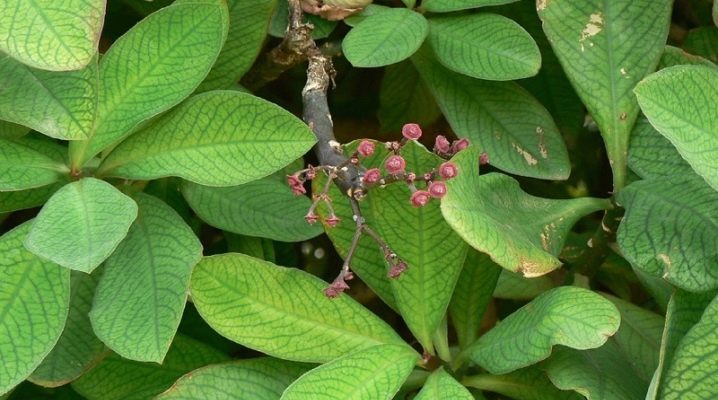
Sinadenium is a perennial, succulent with a lush crown and unusual decorative foliage. This shrub has other names: "tree of love" and euphorbia. The plant is common in hot tropical and subtropical zones, but it is successfully grown at home. It is not difficult to take care of him, however, for his active growth, systematic implementation of certain rules will be required.
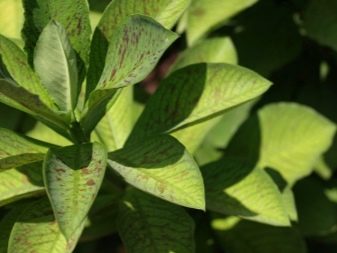
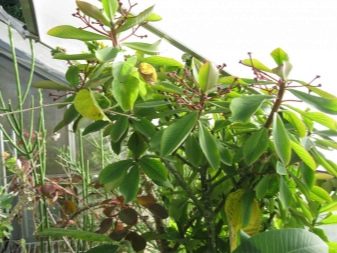
general description
Sinadenium belongs to evergreen shrubs... Its stem is straight and thick, leaves are dense, oval in shape, located on short petioles. The leaf plates are leathery with a rough surface. Their color is dark green. In some plant species, red and variegated shades with purple and purple blotches are present on the foliage. The leaves are large, they grow up to 20-24 cm in length, and their width reaches about 10-11 cm. Wild shrubs reach a height of 300 cm.When grown at home, their height does not exceed 150 cm. The peculiarity of the synadenium is its rapid growth. So, for a year, its height increases on average by 15-20 cm.
The shrub has a strong, well-developed root system with numerous branches. The roots go deep into the soil. The shoots of the plant are flexible and thickened, dark green in color. They accumulate liquid that is consumed during long dry periods. The flowers of the shrub are small, with petals slightly bent to the side. Their color is white or pink. Flowers look like bells. Flowering is possible only in natural conditions. When grown on a windowsill, the plant will not bloom. The fruits of the synadenium are small triangular boxes with seeds inside.

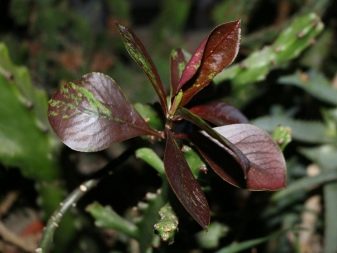
Popular types
In the natural environment, there are 20 types of synadenium, but only 2 of them are used as indoor flowers.
- Grant... The plant looks like a compact shrub with a lush crown. In nature, it branches strongly, its multiple shoots extending along the sides form thickets. The color of the foliage is rich green; varieties with variegated plates are less common. Leaves are dense, with a glossy surface.
- Rubra... This is a variety that was bred from Grant's synadenium. Its peculiarity is bright large foliage with irregular outlines. In young shrubs, it is pink; over time, blurry spots of a purple hue appear on the leaf plates.
These 2 types of synadenium do not flower when grown at home, even with proper care. In their natural environment, their flowering occurs in winter.
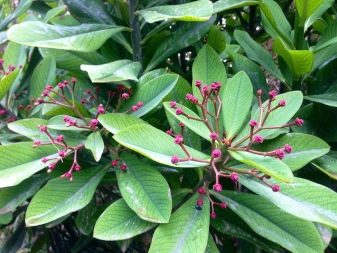
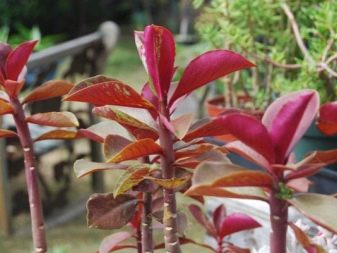
Landing
When planting, the shrub cuttings are rooted into the ground. To make the plant feel comfortable, it is first of all important to choose the right soil. For milkweed, neutral soil, loose and nutritious, is optimal.
You can cook it yourself. To do this, mix in equal parts earth, peat and sand. To prevent root rot, it is recommended to add crushed charcoal to the mixture. To eliminate stagnant moisture, drainage must be used... To do this, expanded clay or crushed brick is placed in the lower part of the pot.
Care
It is not difficult to take care of the indoor synadenium, but it still has its own characteristics. Even a novice florist can grow a beautiful and healthy tropical shrub at home. To do this, you need to familiarize yourself with the basic rules of care and follow them regularly.
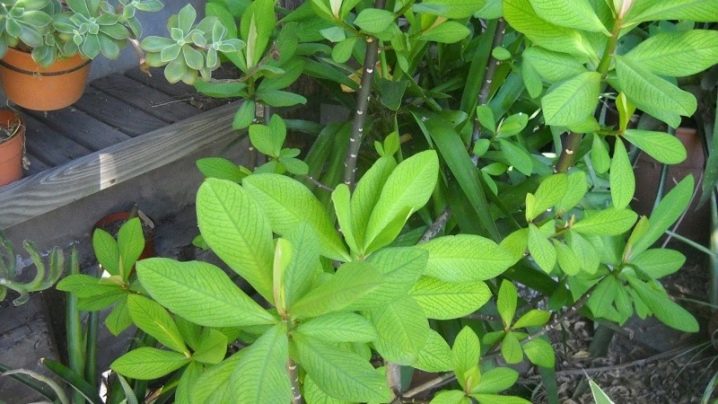
Conditions
So that the shrub does not get sick, pleases with bright decorative foliage and active growth, it is important to take a responsible approach to the issues of lighting, temperature and humidity. Let's consider each condition in more detail.
- Lighting... The synadenium will respond with active growth to a large amount of sunlight. However, direct sunlight is undesirable, since they often lead to burns on the leaf plates. Affected leaves quickly turn yellow, brown spots appear on them. With extensive burns, the plates can twist. It is recommended to place the plant on the western or eastern windowsills. If the south window is chosen, you should remove the spurge at noon in a shaded place. Artificial lighting should be provided to prevent the shoots from pulling out in winter.
- Temperature... For a synadenium, a year-round temperature maintenance in the range from 20 to 26 degrees is optimal. The spurge does not need a rest period. In winter, a drop in air temperature is allowed, but not lower than 15 degrees. Lower values are critical - they can lead to the death of the plant. Drafts and sudden temperature changes are dangerous for tropical shrubs. From them, the spurge will begin to wither and actively throw off the leaves.
- Air humidity. A tropical succulent plant tolerates aridity and low humidity well. When it is diluted at home, additional humidification of the air is not required. In order not to harm, it is not recommended to place the plant near heating devices.
If the room is very hot, it is allowed to spray water next to the milkweed, while excluding the ingress of moisture on its leaves.


Watering
Moderate watering is optimal for sinadenium.... Waterlogging of the soil, as well as aridity, can lead to diseases and deterioration of the condition of the shrub. So, excessive watering often provokes root rot, and insufficient soil moisture - wilting of milkweed. In the autumn and spring periods, you need to irrigate the flower no more than 1 time in 2 weeks. Summer watering depends on the rate of soil drying (the soil should dry 2 cm from the upper limit), but at least once a week.
The main landmark in winter is air temperature. Coolness combined with waterlogging of the soil can lead to the death of milkweed. Depending on the temperature, it is necessary to irrigate the shrub in winter 1-2 times a month. For irrigation, it is recommended to use settled water at room temperature. The liquid that accumulates in the pan must be poured out in a timely manner.
Top dressing
Regular enrichment of the soil with nutrients is the key to the active development of milkweed and its good immunity. It is recommended to apply top dressing to the soil 2 times a year - in spring and summer. You can feed the bush with a complex mineral supplement for cacti or deciduous houseplants. In order not to burn the root system, the fertilizer must first be diluted in water.
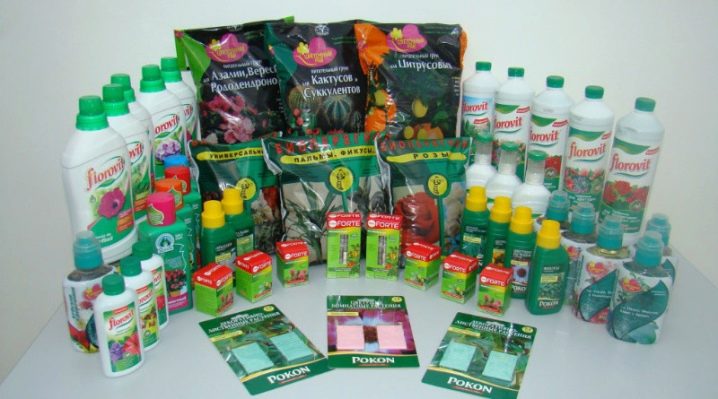
Transfer
The root system of young specimens is developing especially actively, which is why they need an annual transplant for the first 3 years. If this procedure is neglected, the growth of the bush will slow down, it will begin to wither. Before planting a synadenium, it is important to choose the right container. For ornamental shrubs, deep dimensional pots made of wood or ceramics are suitable. It is better to refuse plastic containers - the material is light and fragile, it can crack or overturn over time due to the weight of the bush.
Transplant procedure:
- soil preparation, laying of drainage with a layer of 3 cm;
- filling half the volume of the pot with soil;
- careful extraction of milkweed from an old container, removal of soil residues from the root system;
- removal of part of the roots (performed if it is necessary to restrain the growth of the synadenium);
- placing in a new container, filling in the remaining soil.
This is important: the milky juice of the synadenium is toxic. In contact with the skin and mucous membranes, it causes severe irritation.Because of this feature, transplant and prune the bush should only be done with rubber gloves.
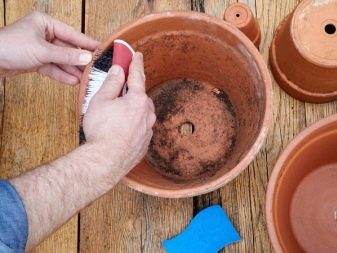

Crown formation
Pruning the shrub helps to slow down the intensive development of its shoots, helps to form a beautiful crown and give the bush a neat look. The work must be done regularly. The best time is the beginning of spring. Pruning of long and bare shoots is performed using a sharpened knife. To ensure good branching and splendor, the tops should be pinched periodically.
Reproduction
Synadenium is propagated in 2 ways: using cuttings or seeds. The first method is the most preferable. You need to plant seeds or cuttings in the spring. During work, do not allow milky juice to get on the skin, and also protect pets and children from the bush. To get a stalk, you need to cut off a 10 cm branch from the upper shoot (it must have at least 4 leaves). The cut on the bush and shoot is treated with ground charcoal.
The cut of the planting material should be dried to form a film. This takes 24 to 48 hours.
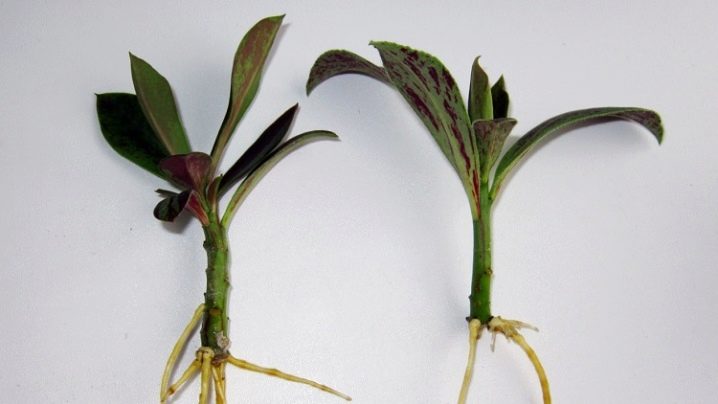
A whitish tint on the cut indicates the readiness of the cutting for planting. Planting material is planted in a pot filled with soil (for self-preparation of the soil, it is necessary to take birch coal, sand and peat in equal quantities). The stalk must be deepened into damp ground. Place the pot in a bright and warm place. The emergence of young leaves 20-25 days after planting will tell about the rooting of the cuttings.
Using seeds is a longer and more painstaking breeding process, but it allows you to get many new young bushes. The procedure includes several stages.
- Soil preparation. For planting seeds, a substrate of 50% peat and 50% coarse sand is suitable.
- Planting seeds to a depth of 10 mm in moist soil.
- Creation of a greenhouse. To do this, cover the container with a plastic bag and leave it in a well-lit place. The first shoots should appear in 10-14 days.
- Picking seedlings when they reach a length of 1 cm.
When the plants reach a height of 3-4 cm, they need to be transplanted into soil intended for adult specimens.

Diseases and pests
Insects rarely attack the synadenium. The poisonous milky sap of plants repels pests. However, with reduced plant immunity or dry air, a scabbard, spider mite or mealybug can attack the euphorbia. Treating the bushes with insecticidal preparations will help to cope with these insects. The following insecticides are popular among flower growers:
- Inta-Vir;
- Derris;
- Fitoverm;
- "Fufanon";
- Karbofos.
Sinadenium is rare. Basically, the plant gets sick due to improper care. Excessive watering leads to gray root rot. In this case, transplantation and fungicide treatment will help to save the culture. With insufficient watering, the bush actively sheds foliage, becomes stunted. To get rid of this problem and restore a healthy appearance to the synadenium, optimal watering should be restored. The lethargy of the bush and the discharge of green mass can be observed due to freezing of milkweed, waterlogging or insufficient watering, and a lack of phosphorus. When the cause is found and eliminated, the plant quickly recovers.
The rules for caring for the synadenium are simple. Observing them, it is possible to green the interior of your house in a short time.
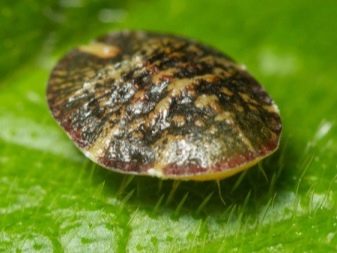
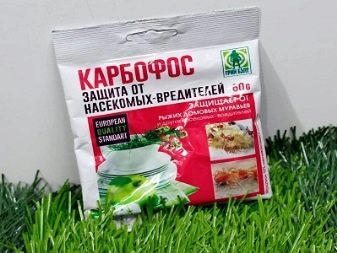























































The comment was sent successfully.